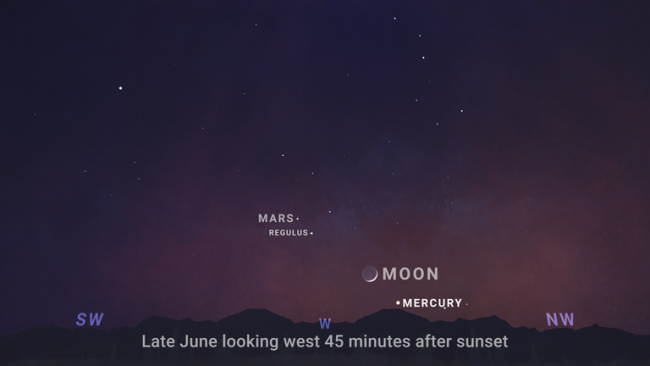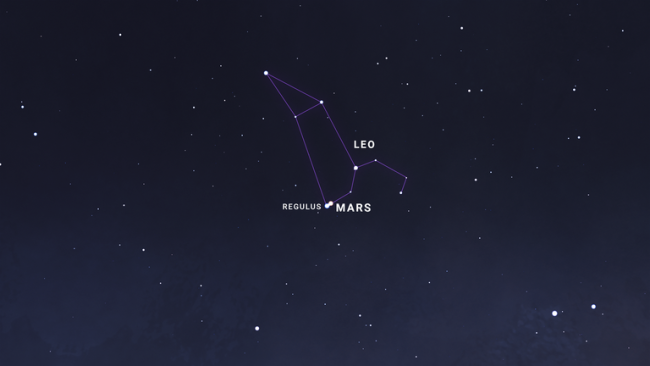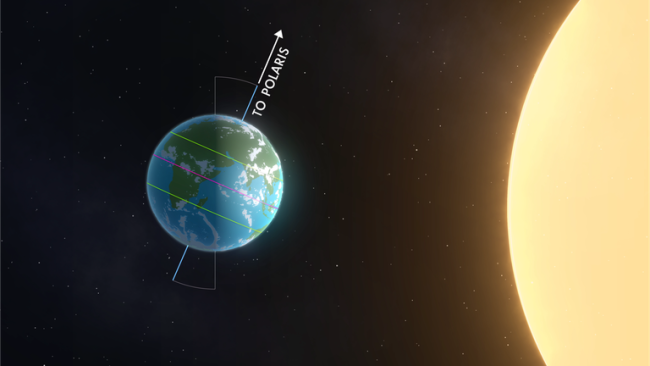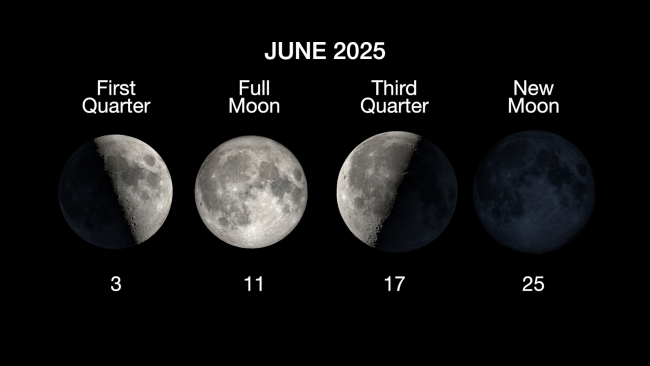Current Night Sky
The Center for Astrophysics | Harvard & Smithsonian advances humanity’s knowledge of the Universe by uncovering the nature of distant cosmic phenomena. But many of our greatest discoveries start with the simple act of observing. Here’s what to look for in our current night sky. (Courtesy NASA/JPL-Caltech)
June 2025
Planets, Solstice, and the Galaxy
Venus and Saturn separate, while Mars hangs out in the evening. Plus the June solstice, and dark skies reveal our home galaxy in all of its glory.
Highlights
- All Month – Planets Visibility:
- Venus: Rises about 2 hours before the Sun in June, and shines very brightly, low in the eastern sky, in the morning all month.
- Mars: Visible in the west for a couple of hours after sunset all month. Drops lower in the sky as June continues, and passes very close to Regulus in the constellation Leo on June 16 and 17. (They will be about half a degree apart, or the width of the full moon.)
- Jupiter: Visible quite low in the west after sunset for the first week of June, then lost in the Sun's glare after. Will re-appear in July in the morning sky.
- Mercury: Becomes visible low in the west about 30 to 45 minutes after sunset in the last week and a half of June.
- Saturn: Rises around 3 a.m. in early June, and around 1 a.m. by the end of the month. Begins the month near Venus in the dawn sky, but rapidly pulls away, rising higher as June goes on.
- Daily Highlights:
- June 19 – Moon & Saturn: The third-quarter moon appears right next Saturn this morning in the hours before dawn. The pair rise in the east together around 1:30 a.m.
- June 22 – Moon & Venus: Venus rises this morning next to a slender and elegant crescent moon. Look for them in the east between about 3 a.m. and sunrise.
- June 20 – June Solstice: The June solstice is on June 20 for U.S. time zones (June 21 UTC). The Northern Hemisphere's tilt toward the Sun is greatest on this day. This means the Sun travels its longest, highest arc across the sky all year for those north of the equator.
- June 16 & 17 – Mars & Regulus: Mars passes quite close to the bright bluish-white star Regulus, known as the "heart" of the lion constellation, Leo. They will appear about as far apart as the width of the full moon, and should be an excellent sight in binoculars or a small telescope.
- June 21-30 – Mercury becomes visible: For those with a clear view to the western horizon, Mercury becomes visible for a brief period each evening at the end of June. Look for it quite low in the sky starting 30 to 45 minutes after the Sun sets.
- All month – Mars: The Red Planet can be observed for a couple of hours after dark all month. It is noticeably dimmer than it appeared in early May, as Earth speeds away in its orbit, putting greater distance between the two worlds.
- All month – Milky Way core: The bright central bulge of our home galaxy, the Milky Way, is visible all night in June, continuing through August. It is best observed from dark sky locations far from bright city lights, and appears as a faint, cloud-like band arching across the sky toward the south.
What's Up for June?
Mars grazes the lion's heart, a connection to ancient times, and the galaxy in all its glory.
June Planet Observing
Starting with planet observing for this month, find Saturn and Venus in the eastern sky during the couple of hours before dawn each morning throughout the month. Saturn rapidly climbs higher in the sky each day as the month goes on. You'll find the third quarter moon next to Saturn on the 19th, and a crescent moon next to Venus on the 22nd.

Mercury pops up toward the end of the month. Look for it quite low in the west, just as the glow of sunset is fading. It's highest and most visible on the 27th.
Mars is still visible in the couple of hours after sunset toward the west, though it's noticeably fainter than it was in early May. Over several days in mid-June, Mars passes quite close to Regulus, the bright star at the heart of the constellation Leo, the lion. Have a peek on the 16th and 17th with binoculars or a small telescope to see them as close as the width of the full moon.

Milky Way Core Season
June means that Milky Way "Core Season" is here. This is the time of year when the Milky Way is visible as a faint band of hazy light arching across the sky all night. You just need to be under dark skies away from bright city lights to see it. What you're looking at is the bright central core of our home galaxy, seen edge-on, from our position within the galaxy's disk.
Long-exposure photos make the Milky Way's bright stars and dark dust clouds even clearer. And while our eyes see it in visible light, NASA telescopes observe the galaxy across the spectrum — peering through dust to help us better understand our origins.
However you observe it, getting out under the Milky Way in June is a truly remarkable way to connect with the cosmos.
June Solstice
June brings the summer solstice for those north of the equator, which is the winter solstice for those south of the equator. In the Northern Hemisphere, this is when the Sun is above the horizon longer than any other day, making it the longest day of the year. The situation is reversed for the Southern Hemisphere, where it's the shortest day of the year.

Earth's tilted rotation is the culprit. The tilt is always in the same direction, with the North Pole always pointing toward Polaris, the North Star. And since that tilt stays the same, year round, when we're on one side of the Sun in winter, the north part of the planet is tilted away from the Sun. But six months later, the planet moves halfway around its annual path, carrying us to the opposite side of Earth's orbit, and the northern part of the planet now finds itself tilted toward the Sun. The June solstice is when this tilt is at its maximum. This is summertime for the north, bringing long days, lots more sunlight, and warmer temperatures.
The June solstice marks a precise moment in Earth's orbit – a consistent astronomical signpost that humans have observed for millennia. Ancient structures from Stonehenge to Chichén Itzá were built, in part, to align with the solstices, demonstrating how important these celestial events were to many cultures.
So whether you're experiencing long summer days in the northern hemisphere or the brief daylight hours of winter in the south, find a quiet spot to watch the sunset on this special day and you'll be participating in one of humanity's oldest astronomical traditions, connecting you to observers across thousands of years of human history.
Here are the phases of the Moon for June.

The phases of the Moon for June 2025.
NASA/JPL-Caltech
Stay up to date on all of NASA's missions exploring the solar system and beyond at NASA Science. I'm Preston Dyches from NASA's Jet Propulsion Laboratory, and that's What's Up for this month.